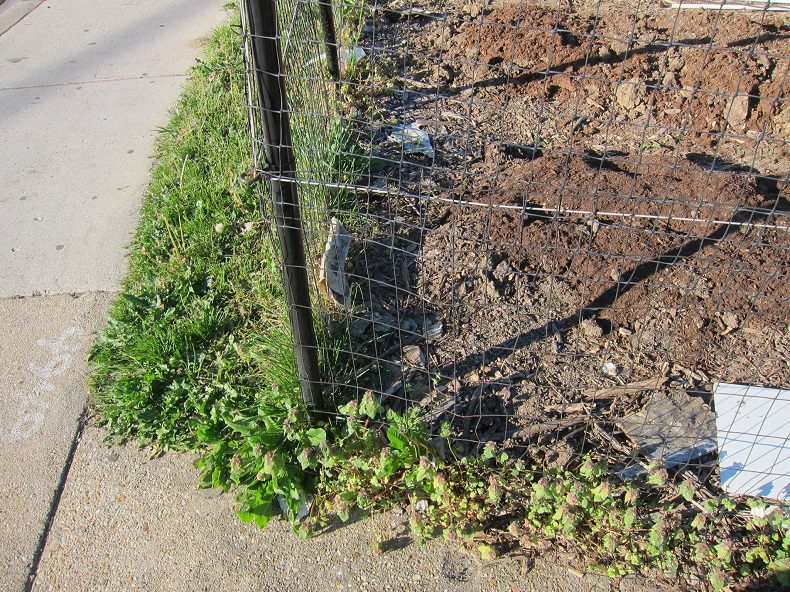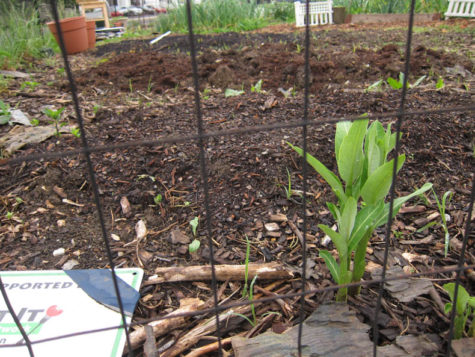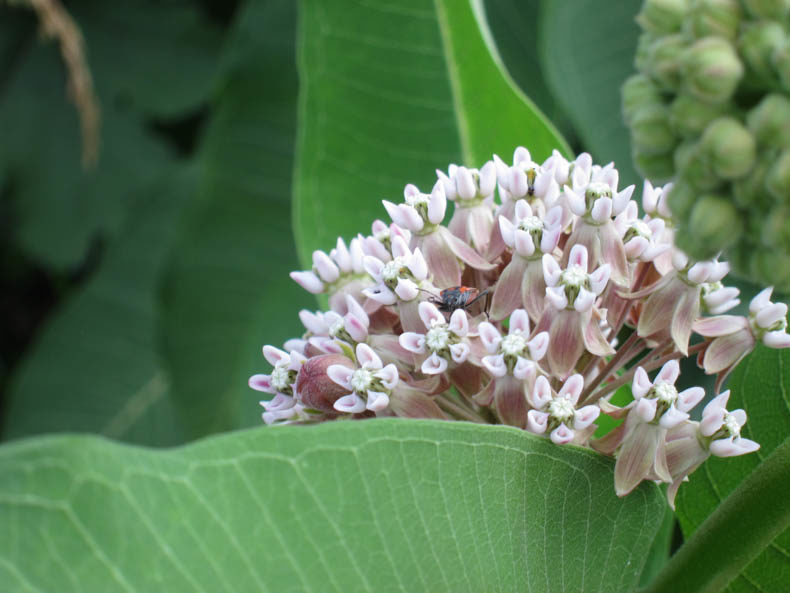 Back in April, somebody at the community garden got ambitious.
Back in April, somebody at the community garden got ambitious.
Weeds usually grow pretty profusely around the edges of the garden. But on one Thursday in April, when I walked by on my way to work, the weeds in the corner I pass every day had been completely turned over, in preparation for vegetables.
I was sad. That was the corner with the milkweed.
In the fall of 2014, I wrote about the milkweed that grew in that corner – its progression from a fuzzy white pod visited by bugs, to a dry brown pod, to an adorable explosion of seeds with silky white hairs. The next summer I got acquainted with a monarch butterfly chrysalis – not one that had grown on that particular milkweed plant, but the same kind of butterfly that should be laying its eggs on that kind of plant.
I’d thought maybe someday I would get to see a monarch caterpillar or chrysalis right there, in the wild, but now the ground was all torn up.
Of course I don’t have any control over what people do with their community garden. And if they want to use their little corner of the world to grow squash instead of weeds, well…I can hardly blame them.
 It was silly of me to doubt the power of the milkweed. A few weeks later some familiar-looking leaves were poking from the ground.
It was silly of me to doubt the power of the milkweed. A few weeks later some familiar-looking leaves were poking from the ground.
And by late June, I was sure—the milkweed had come back.
Its community was back, too. I’ve seen beetles, ants, and fuzzy bumblebees taking care of business on its stems, leaves, and flowers. And I’ll keep an eye out. Maybe later in the summer a monarch butterfly will decide this particular milkweed is a good place to lay her eggs.
***
All photos by Helen Fields
Weed has such a negative implication for gardners, it’s unfortuante, especially for the milkweed.